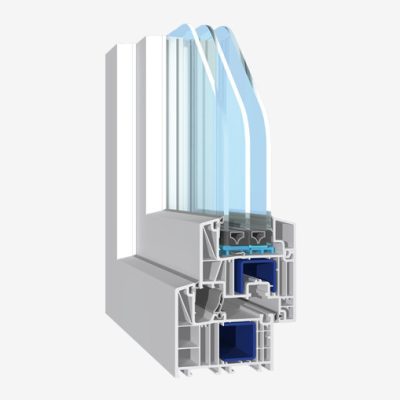Windows used in passive buildings are characterised by excellent insulation parameters and the use of many solutions aimed at minimising energy consumption during operation. The energy demand in such buildings is eight times lower than in houses built with traditional technologies. One of the most important elements influencing the passivity of a building is the windows.
Dr Wolfgang Feist, the founder of the Passive House Institute (PHI) in Darmstadt, which was founded in 1996, developed and implemented many solutions used in the construction of energy-efficient buildings, and the aforementioned Institute is still a leader in global passive construction. Currently, the Institute in Darmstadt sets the directions and criteria that buildings and their components should follow. Since the largest energy losses in any building are generated by windows and doors, they are given a lot of attention.
The term “passive window“, which is often used, is a shortcut. It should rather refer to windows and doors with the parameters and characteristics required in passive buildings. For Poland, which lies in a moderately cool zone, a passive window must have a heat transfer coefficient of Uw ≤ 0.8 (W/(m2K)). However, it should be remembered that a passive window is not only about the appropriate heat transfer coefficient, but also a complex construction made of suitable materials. The way in which the windows are installed in passive houses is also important. It is rather impossible to turn an existing house into a passive house. The required building tightness is rather impossible to achieve in older houses and the attempt to convert is not profitable.
For many investors of new houses, a passive house is also an unacceptable solution. The strict requirements for such houses, such as the lack of roof windows, corner windows, sliding doors without special airtightness certificates, as well as the dreamlike appearance that contradicts the principles of creating passive objects, sometimes make this solution unacceptable. Another interesting solution is the use of a window with the innovative I-tec ventilation system, which allows rooms to be ventilated without having to open the windows, even if they are closed around the clock. Ventilation of this type uses a heat exchange system, which means that the air supplied from outside is heated by the air released from the inside, which makes the energy losses associated with ventilation almost imperceptible. Usually, the architect who designs a passive house develops a method of installing windows and doors suitable for this type of building. However, for various reasons, installation teams do not always strictly adhere to these methods. The problem often lies in the tendency to cut corners, which in this case has the opposite effect. Unfortunately, there is no one-size-fits-all method for installing windows in a passive house. The installation of passive windows differs from the solutions used in traditional construction, the so-called “foam installation”. Passive house windows should be installed by professionals trained in this field using special materials designed for energy-efficient construction and following the technology provided by the designer. Read also:Windows for a passive house
A passive house is not for everyone
Installing passive windows in a traditionally built house often presents a serious obstacle. If the rooms are not sufficiently ventilated, condensation can form after replacing the windows with passive windows. To avoid this problem, you can use windows with so-called micro-ventilation, which involves moving the sash away from the frame, thus unsealing the sash, allowing fresh air to enter without overcooling the room.
Installation of passive windows
What you should know when investing in passive windows
Polecane produkty

Salamander Bluevolution 73

Salamander Bluevolution 82

